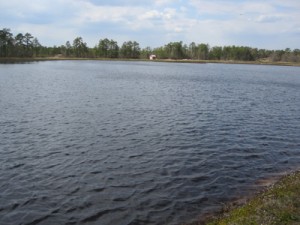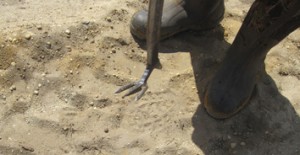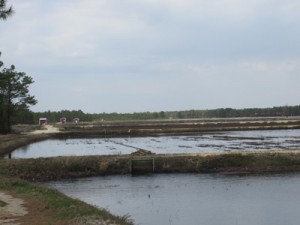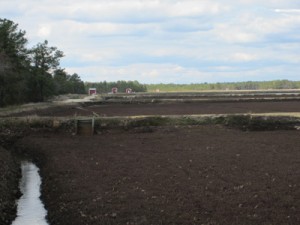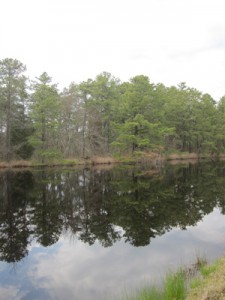The three things that are most important to growing cranberries are water, water, and more water.
Good water management is not only the crucial part of our work here at Pine Island – it’s essential to the balance of agriculture production with the Pinelands environment. To that end, we have over the course of many years carefully crafted a system that works with both nature and gravity to best maintain and preserve the bounty of natural resources available to us.
Once the harvest is over, the bogs are flooded in order to protect the cranberry vines from the winter weather.
When the warmer weather sets in, the bogs are drained so that the dormant vines awaken for the growing season; while cranberries are most frequently harvested using the “wet pick” method, they do not actually grow under water and thus need to go through the same growing cycle as any other fruit crop. The process, which we call “dumping water” is deceptively simple: a team member takes a gate hook (pictured below) and removes the boards that have been placed across the gate in the bog. (The boards are removed in a specific pattern to work with gravity and the natural flow of the water.)
Gerardo Ortiz, a supervisor who has been with Pine Island for 30 years, knows this process inside and out.
Once the boards have been pulled and placed on top of the gate, the water moves to the next bog along the ditches. This water returns to the reservoirs and canals in order to be reused for the next part of the cycle.
It takes about 24 hours to drain completely; here it’s about halfway done.
As we prepare for the next process, which is frost protection, our reservoirs are keeping our most valuable resource safe and ready for use.

